Larger than Delaware, Maryland, Massachusetts, and Connecticut combined, the Texas Hill Country was an isolated frontier settlement.

The Problem
The Texas Hill Country encompassed three frontiers relating to electrification.
Frontier of Place
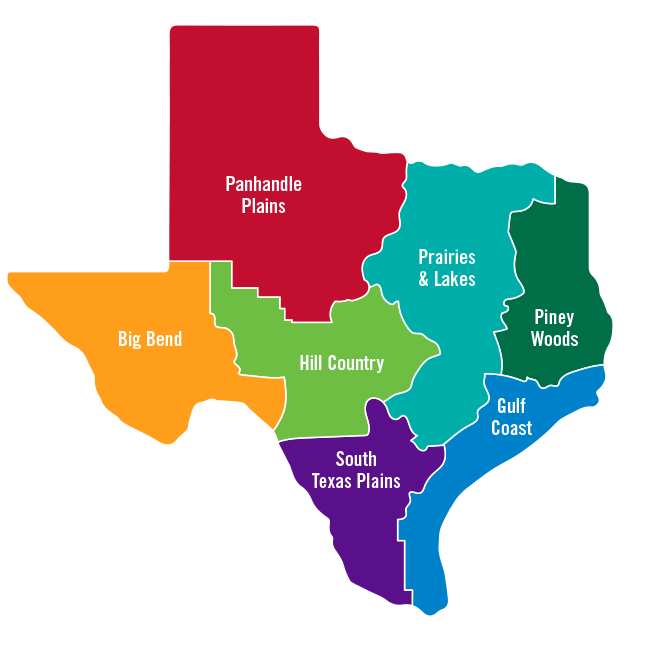
Texas regions - 2023, Svadore Maps
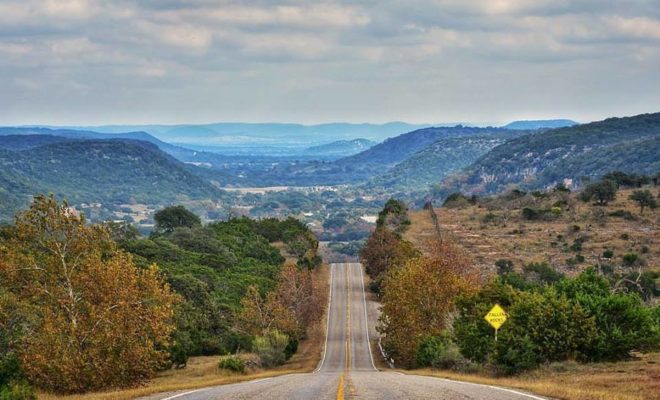
Hill Country landscape - December 28, 2017, Texas Hill Country Photographs
Plagued by blazing heat, freezing cold, and poor soils, the Hill Country was what historian Robert Caro called a “beautiful trap . . . It had river-carved landscapes, the dry climate, the clear blue sky . . . and the reality was rock. It was a land of stone." [1]
Less than 100 miles from Austin’s lights, Hill Country homes had no electric power. Sparse population made electrification unprofitable, and the deep ravines, steep hillsides, and solid limestone made construction expensive. One relocating family said: “[m]oving from Portland into the Hill Country was like moving from the twentieth century back into the Middle Ages." [2]
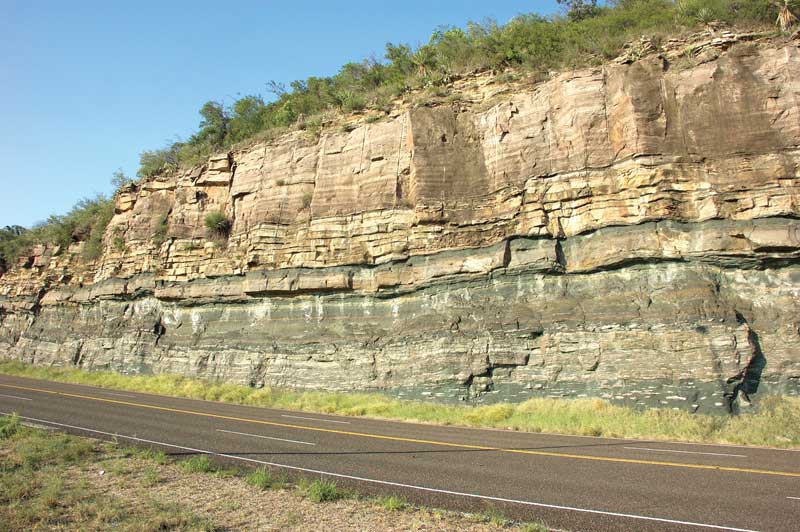
Hill Country geology - October 26, 2017, Highland Lakes
Frontier of People
"Power and the Land" - 1940, Rural Electrification Administration
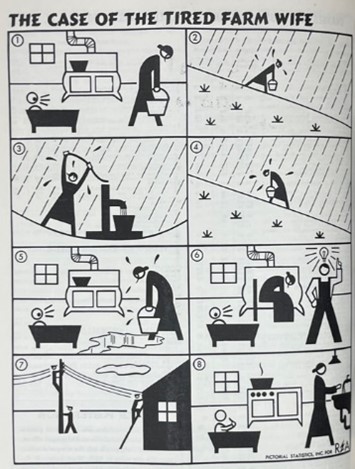
"The Case of the Tired Farm Wife" - September 1939, REA Home Electrification Guide Pamphlet
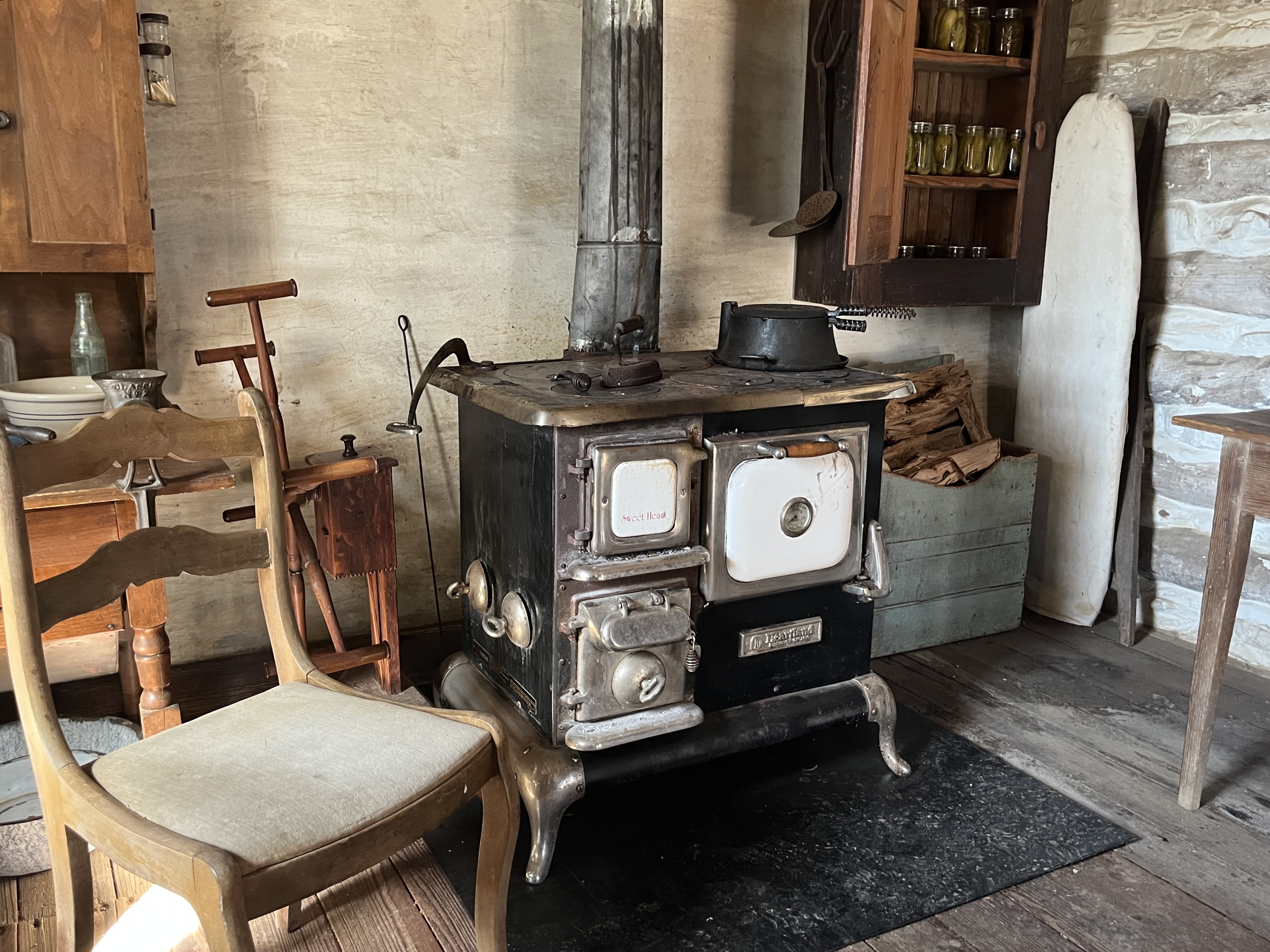
Traditional Hill Country kitchen - Lyndon B. Johnson State Historic Park, photo by author, March 2023
Hill Country residents had to live without electricity. Quotes from them are below:
“You’d have to cook for hours. Oh, that was a terrible thing…That stove was so hot. But you had to stir…You got so hot that you couldn’t stay in the house. You ran out and sat under the trees. I couldn’t stand it to stay in the house. Terrible. Really terrible. But you couldn’t stay out of the house long. You had to stir. You had to watch the fire. So, you had to go back into the house.”
- Bernice Snodgrass
“We didn’t have refrigerators, you know, and without refrigerators, you just about have to start every meal from scratch.”
- Lucille O’Donnell
“I’ll tell you—of the things of my life that I will never forget, I will never forget how much my back hurt on washdays.”
- Ava Cox
“The water supply was mechanically powered by a windmill, but when the wind didn't blow, you had to use a pumpjack.”
- Charlie Haydon
“Yes, we had running water. I always said we had running water because I grabbed those two buckets up and ran two hundred yards to the house with them.”
- Mrs. Brian Smith
“Those clothes were really heavy in the water, and it was hot outside, and you’d be standing over that boiling water and that big fire—you felt like you were being roasted alive.”
- Gay Harris
Charlie Haydon - Interviewed by author, Remaining quotes - The Years of Lyndon Johnson: The Path to Power
Describing wash day - February 20, 2023, Hill Country resident, Jim McCarty, personal interview with author
The area also lacked a strong political leader who could bring power to its people.
Frontier of Ideas
Electrification required funding, generation, and transmission. The Hill Country complicated all three.
Funding Frontier: Funding through the REA and the Rural Electrification Act of 1936 required three customers per square mile—a density threshold the Hill Country could not meet.
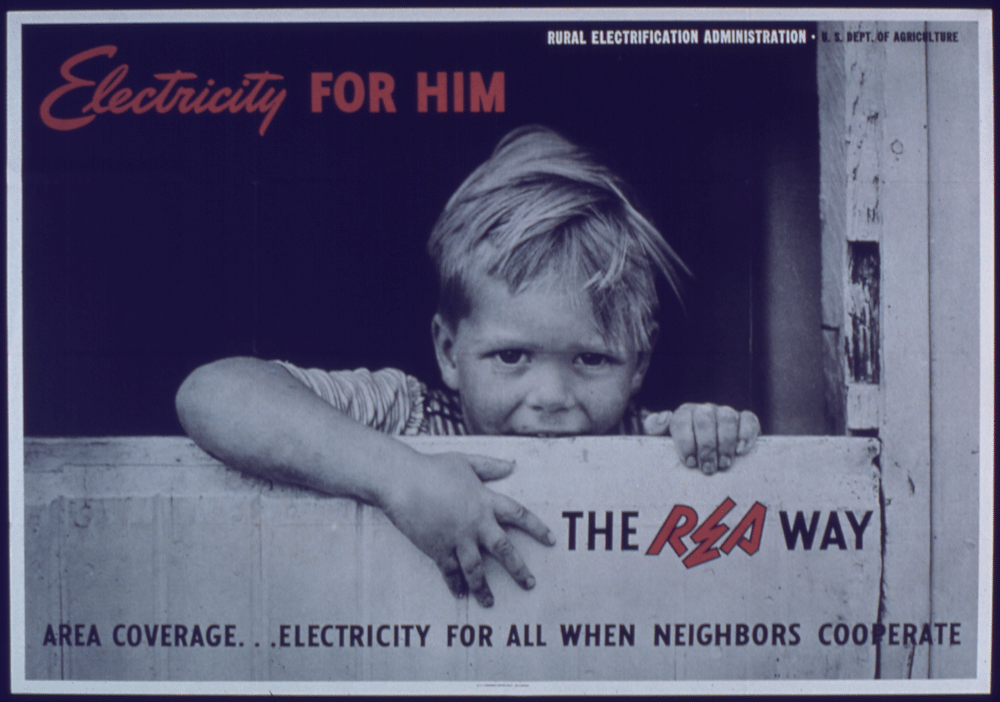
REA advertisement - 1937, Rural Electrification Administration

"LCRA" - 1939, The Untold Story of the Lower Colorado River Authority
Generation Frontier: The Lower Colorado River Authority (LCRA) operated hydroelectric dams. However, its only customer—the Texas Power and Light Company (TPLC)—demanded low prices, keeping the LCRA near bankruptcy.
Transmission Frontier: TPLC monopolized regional electrical transmission in the 1930s but refused Hill Country service, citing high cost and low return.
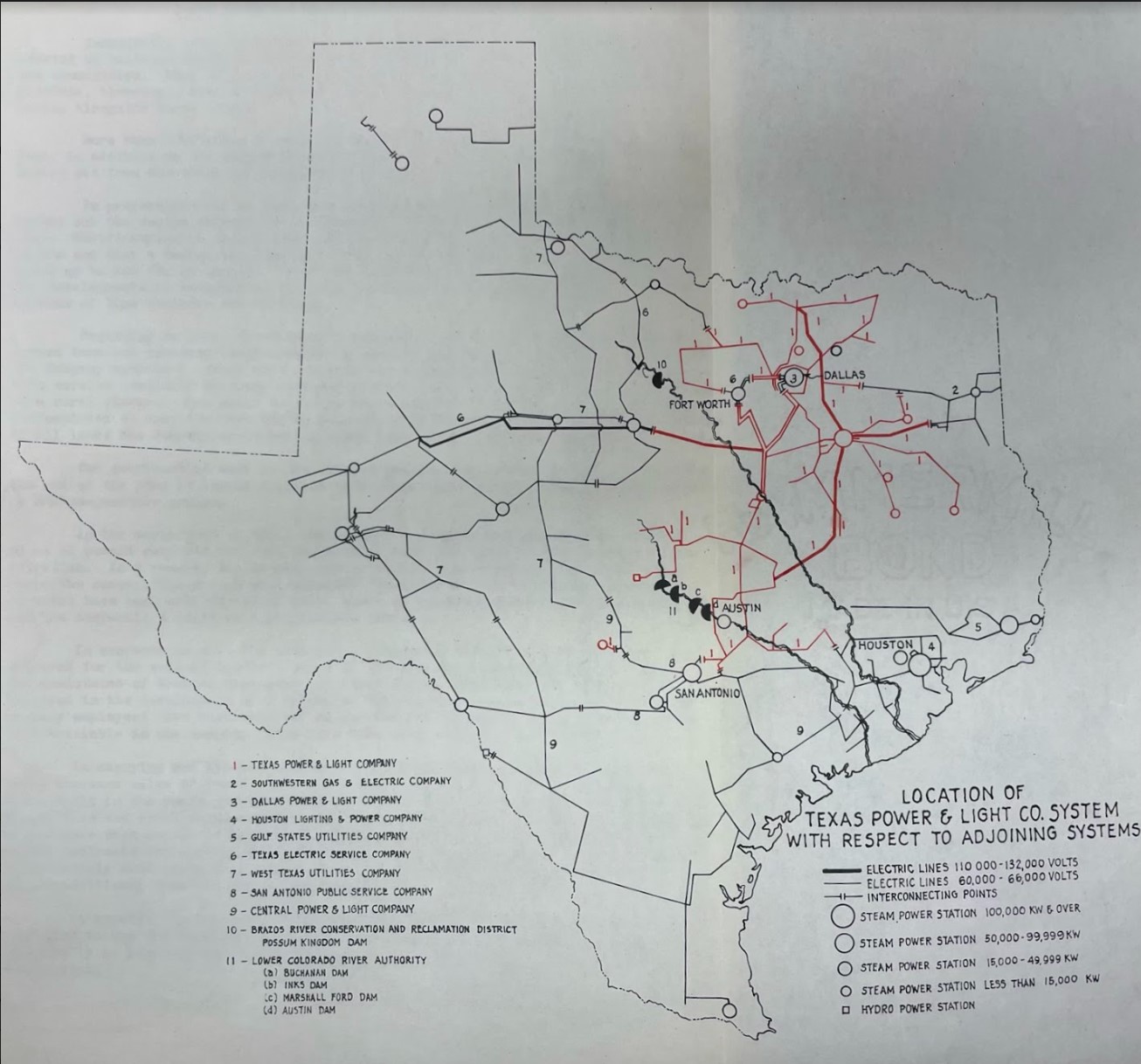
TPLC electrical lines - 1937, Lyndon B. Johnson Presidential Library
It would take a native Hill Country leader to eventually tame these frontiers.
[1], [2] - The Years of Lyndon Johnson: The Path to Power